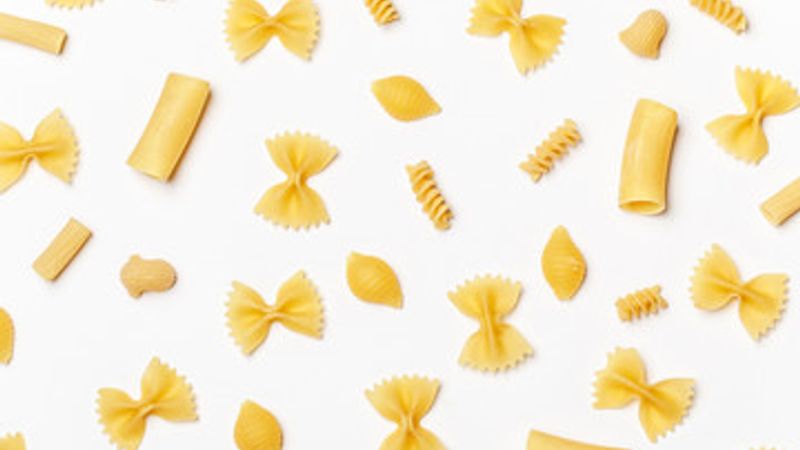

Our Review Process
Our articles undergo extensive medical review by board-certified practitioners to confirm that all factual inferences with respect to medical conditions, symptoms, treatments, and protocols are legitimate, canonical, and adhere to current guidelines and the latest discoveries. Read more.
Our Editorial Team
Shifa Fatima, MSc.
Author
Dr. Apoorva T, MHM.
MEDICAL ADVISOR
Is Pasta Good for Diabetes?
Pasta is very comforting and versatile food. It can be moulded into any flavour and provide a satisfying savoury sensation. However, pasta is high in carbohydrates. Too many carbohydrates can lead to inflammation, weight gain, and elevated blood sugar levels, especially in diabetic people. People with diabetes can eat and enjoy noodles as part of a healthy diet that emphasises portion control and moderation and is accompanied by physical exercise.
Table of Contents
Which Pasta Is Better For Diabetics?
If you're living with diabetes, you might think pasta is off-limits due to its high carbohydrate content. However, there are pasta varieties that can be enjoyed as part of a balanced meal plan. Whole wheat or whole grain pasta takes the lead, boasting a lower glycemic index and providing essential fiber. For an extra nutritional boost, consider legume-based pasta made from lentils, chickpeas, or black beans. These alternatives are higher in protein and fiber, aiding in blood sugar control. Remember to practice portion control, pair pasta with lean proteins and fiber-rich veggies, and opt for al dente cooking. With smart choices, you can savor pasta without compromising your health.
When it comes to pasta choices for individuals with diabetes, it's important to consider the impact on blood sugar levels. Generally, pasta is high in carbohydrates, which can cause blood sugar spikes. However, there are some alternatives and strategies that can help make pasta more diabetes-friendly:
1. Whole Wheat Pasta: Made from whole wheat flour, this pasta retains the bran and germ, providing more fiber, vitamins, and minerals than refined pasta. It has a nuttier flavor and a slightly denser texture.
2. Whole Grain Pasta: Similar to whole wheat pasta, whole grain pasta is made from a variety of whole grains like barley, quinoa, or brown rice. It offers a diverse range of nutrients and is a good source of fiber.
3. Lentil Pasta: Made from ground lentils, this pasta is packed with protein and fiber. It has a slightly earthy taste and pairs well with a variety of sauces and toppings.
4. Chickpea Pasta: This pasta is derived from chickpea flour, providing a substantial amount of protein and fiber. It has a mild taste and a slightly firmer texture.
5. Black Bean Pasta: Black bean pasta is rich in both protein and fiber. It has a distinctive dark color and a slightly dense texture. It adds an interesting twist to pasta dishes and is suitable for those looking for plant-based protein sources.
6. Konjac Noodles: These noodles are made from the konjac plant's root, also known as glucomannan. They are extremely low in calories and carbohydrates and have a gelatinous texture. Konjac noodles are a great option for those looking to minimize their calorie and carbohydrate intake.
7. Zucchini Noodles (Zoodles): Zoodles are made by spiralizing fresh zucchini into noodle-like strands. They are incredibly low in carbohydrates and calories while being rich in vitamins and minerals. Zoodles can be enjoyed raw or lightly sautéed and make a fantastic base for various sauces and toppings.
When incorporating these pasta options into your diet, remember to practice portion control, balance your meal with protein and vegetables, and monitor your blood sugar levels accordingly.
Can People With Diabetes Eat Pasta?
Yes, people with diabetes can eat pasta. However, it's important for them to be mindful of their portion sizes, choose the right type of pasta, and consider how it fits into their overall meal plan. Carbohydrates, including those found in pasta, can raise blood sugar levels. Therefore, portion control is crucial. Aim for appropriate serving sizes, which typically range from half a cup to one cup of cooked pasta. This helps manage the impact on blood sugar levels. Choosing the right type of pasta can also make a difference. Whole wheat or whole grain pasta is a better option than refined pasta because it contains more fiber and has a lower glycemic index, which means it has a slower and steadier impact on blood sugar levels. Additionally, legume-based pasta made from lentils, chickpeas, or black beans are higher in protein and fiber, which can further help regulate blood sugar levels. Pairing pasta with protein-rich foods, such as lean meats, fish, tofu, or legumes, and adding fiber-rich vegetables can slow down digestion and minimize blood sugar spikes. It's also important to consider the sauces and toppings used with pasta, opting for low-sugar options and avoiding excessive amounts of oil. Individuals with diabetes should work with a registered dietitian or healthcare provider to develop a personalized meal plan that considers their specific needs, including carbohydrate intake, blood sugar control, and overall health goals.
Pasta Tips for people with diabetics
1. Whole Wheat, Fortified and Gluten-Free Pasta
Whole wheat pasta offers three times the fibre, making it a superior alternative for blood sugar control. Fortified pasta is made with egg whites, lentils, and other protein sources blended with the flour. They may also include barley and oats for added fibre and flaxseed for omega-3. Gluten-free pasta is made with Gluten-free whole grains that are readily accessible in most supermarkets, such as chickpea pasta, quinoa, brown rice good for diabetes and other alternatives.
2. Make Veggies the Star of your Bowl
Putting lots of vegetables adds colour to your dish and makes it more diabetes-friendly. Centring your pasta recipe towards non-starchy and naturally low-calorie vegetables for diabetes such as broccoli, kale, asparagus, mushrooms, carrots, spinach, cucumber etc., adds vitamins and minerals while increasing the amount of food. Non Starchy veggies are high in fibre and low in carbohydrates and should fill around half of your plate or bowl, as they have a lower impact on blood sugar.
3. Skip Creamy Sauce in favour of an Oil-or Tomato-based Sauce
Traditional cream-based sauces have a higher saturated fat and sodium content than other options. People with diabetes are more likely to develop heart disease. It's critical to eat heart-healthy foods low in sodium and fat. Saturated fat-rich diets can elevate blood cholesterol levels, increasing your chance of heart strokes and disease. Meanwhile, too much salt in your diet might raise your risk of high blood pressure, which is one of the leading causes of heart disorders.
4. Choose Olive oil or Tomato-based pasta instead
Pasta cooked in olive oil or tomato-based sauce with fresh garlic has potential heart health benefits. Monounsaturated fat is a type of good fat found in olive oil. When monounsaturated fat, a waxy molecule that is helpful in tiny amounts, is substituted for less healthy fat sources such as butter, cholesterol is reduced. Olive oil good for diabetes, on the other hand, is heavy in calories (124 calories per tablespoon). As a result, portion control is necessary. Garlic also contains a natural component with antioxidant characteristics that helps keep blood sugar levels in check. Red pasta sauces, such as marinara, are excellent because they have less fat and calories than cream-based sauces.
5. Experiment with Veggie Noodles
Wheat and other carb-rich grains are difficult to digest for people with diabetes. Making noodles out of your vegetables could be the healthiest option. A vegetable peeler can be used to create thin vegetable strips that can be used as noodles. Boil these vegetarian noodles for a few minutes in water, then season with sauces or seasonings and serve. Noodles made with squash, and sweet potatoes will be starchy. Vegetable noodles are high in nutrients and vitamins and low in carbs. Zucchini and carrots may be the best vegetables to use. Zucchini includes 476 mg of potassium and 23.2 mg of vitamin C. Other low-carb veggie noodle possibilities include bell peppers, beetroot, and broccoli.
6. Practice Portion Control
Pasta is a carb-rich food, and no matter how healthy you prepare it, the carb content will still outweigh the other macronutrients. If you want to eat pasta while managing your diabetes, portion control is essential. We tend to eat more with larger portions, resulting in a higher calorie and carbohydrate intake. Pasta can be a healthy dinner choice for persons with diabetes if consumed in moderation and cooked with various natural ingredients. Simply keep track of your portion sizes and cook this dish with consideration, restricting specific toppings and mix-ins, for example, meat, cheese and sauces. Taking wise efforts like these will help you maintain healthy blood sugar, weight, and general health and nutrition.
7. Feature a Lean Protein
You can avoid a quick blood sugar surge by mixing a protein source with a ketogenic food like pasta (and then a crash). This is because protein takes longer to digest than carbs. Plus, adding protein to your spaghetti will make it more filling, preventing you from overdoing it on carbs. You can eat grilled chicken, tofu or fish as a lean protein option. These foods have less sodium and saturated fat in comparison to red meat and processed meats such as bacon.
8. Go easy on the Cheese
When we talk about pasta, we talk about cheese. The key to making your dish healthy lies in moderation and selecting the correct type of cheese. Choose diabetes-friendly white cheeses like Parmesan or mozzarella with reduced fat and calorie content than other selections.
Also read about sugar free, no added sugar, and unsweetened

FAQs
1. Which Pasta is better for diabetes?
Pasta made with whole grains is the most suitable option. Whole grains include whole wheat, barley, jowar, brown rice, and quinoa. Because they are less processed, whole grains provide more vitamins, minerals, and fibre than refined grains.
2. Which is better for diabetes, rice or pasta?
Pasta is preferable to rice because a single serving of pasta has fewer blood sugar spikes than similar servings of rice.
3. Does pasta raise blood sugar levels?
Eating gluten-filled pasta or white sauce pasta, or pasta with fewer veggies will raise the blood sugar levels. However, switching to multi-grain or olive oil or red sauce without or less cheese or pasta with lean protein is a healthier option for people with diabetes.
4. Can people with diabetes eat pasta and rice?
Yes, they can, but in moderation with portion control. It would be better if healthy alternative pasta and rice were consumed.
5. Is Pasta Good For Diabetes?
Pasta can be consumed by individuals with diabetes, but it's important to manage portion sizes and choose healthier options like whole wheat or whole grain pasta. Pairing it with protein and fiber-rich foods can help regulate blood sugar levels.
References
- https://www.sharecare.com/health/diabetes/can-eat-pasta-have-diabetes
Disclaimer
This website's content is provided only for educational reasons and is not meant to be a replacement for professional medical advice. Due to individual differences, the reader should contact their physician to decide whether the material is applicable to their case.








